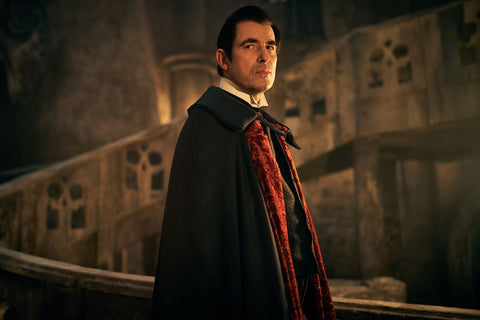Cloaks Versus Capes- What’s The Difference?
In our myriad & wild travels through festival scenes wearing our signature Firefly Cloaks we have met so many admirers that are attracted to our light. Feeling the vibes of a good groove pulsing from the stage, and our multicolored LEDs creating a warm and inviting space to come say hello- they approach. Wild eyed, with grins from ear to ear, friends old and new stop us simply to remark, “Dude, I LOVE the capes!”
Now, far be it from us to call a technical foul on a beautiful compliment or harsh anyone’s mellow, but now that we have a moment we have some explaining to do! It’s not the "Firefly Cape" for a reason and we admit we did not know that reason until we started our research, many moons ago, back in 2016. So, what defines a cape from a cloak? Here's your three keys to future identification!
1. Cloaks have a hood.
As opposed to their close relatives, cloaks have that added protection for your head that capes just cannot provide! Think of how poor Little Red Riding Hood, traipsing through the woods on the way to Grandmomma’s house could catch her death of a cold, far before any canine was implicated, if she didn’t have protection from the elements with her hood!

Little Red Riding Hood Mixed Media by G Barry
We admit, Little Red was an inspiration to us in our design process. Our thoughts were always about that dark and winding path in the forest could have been so much safer if she was lit like a Christmas tree! That sure would scare off any wolf (in grammy pajamas or not) right?

Fireflies in the Wild – Photo by Mountain Trout Photography
2. Cloaks cover you in front of your body.
Now this speaks to the versatility of the cloak as a fashion statement as well as a functional garment, as a cloak acts as a compliment to the wearer’s clothing and protection from the elements like wind and rain. The origin of the word “cloak” comes from the French “cloque” which meant traveler’s cloak or bell (like its shape) and was worn on horseback on the roads from town to town. Women also wore cloaks to protect their finer garments from damage during travel or while attending formal events.
Contrast this with famous capes like DC alien superstar, Superman, and you can see that the Fortress of Solitude would be more warm and comfy for Lois Lane if Clark Kent had some Firefly Cloaks handy for guests! Only keeping your back warm in the snowy tundra is going to be a hard no for us, Man of Steel.

Christopher Reeve in Superman (1978) Panavision/Warner Bros. Entertainment Inc.
3. Cloaks go past the waist.
Some say that this is the main distinction between capes and cloaks, as hoodless cloaks are typically longer versions of the cape which stop about belt high on men. From Count Dracula to Marvel’s Doctor Strange, the length of the cloak is imposing and powerful in its imagery for these characters. We need to upgrade our cloaks to get some of that sweet, sweet levitation that the Doctor gets with his! And we certainly feel alluring and powerful as the Count in his Transylvanian castle when we "cloak up" for a concert or show.

Claes Bang as Count Dracula – Photo from Netflix
We hope this little primer helps you with the distinctions between cloaks and capes. Now, impress your friends and hit a home run with this question in Trivial Pursuit, courtesy of your friends at Austin Bright Light Design!


